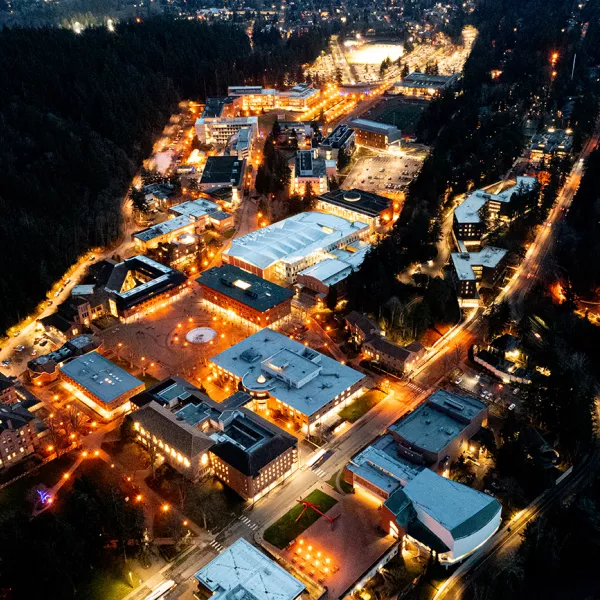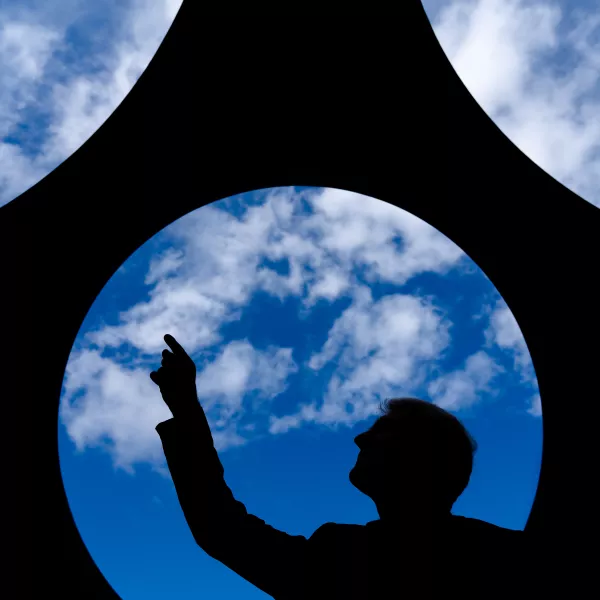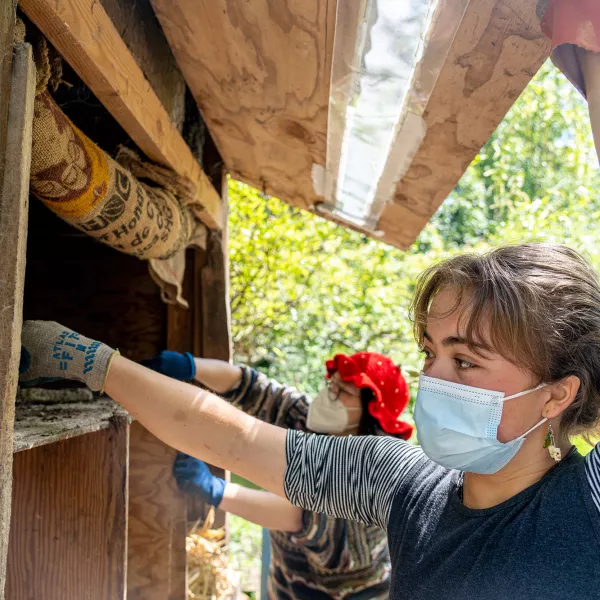Darkness falls on Western’s campus and in the chill night air, there’s a new sound.
“Hello.”
Between the distant footsteps of late-night walkers, the crunch of leaves and whoosh of wings that comprise the usual evening soundtrack, you hear it. A strange, almost robotic chorus.
“We are many in number.”
It sounds ominous, but it’s actually art: “Music for Animals,” a new radio show created by students for the nocturnal denizens of Western’s campus, raccoons and humans alike.
“It’s radio made by artists. It’s meant to make you think, make you more present, surprise you,” says WWU Assistant Professor of Sculpture and Expanded Media Sasha Petrenko.
The nocturnal soundtrack isn’t the only thing playing on Sound.Out.Radio. They’re also broadcasting conversations between artists in different mediums; fall quarter featured dancers talking to visual artists.
“The thing about sound is, it taps into the imagination in a really different way,” Petrenko says. “If you look at something, you can overlook. You can make assumptions about things, you can miss things. But when you’re listening, you can’t halflisten. I think the sounds are a much more intimate way to experience art. You have to be present to truly listen.”
That push to get people to be present is part of what drew Petrenko to create Sound.Out.Radio, starting with a discussion back in June 2021 with Western Gallery Director Hafthor Yngvason about creating a soundpiece for the gallery that then evolved into a full art radio station. With the new solar windows installed at the gallery entrance, the hope is that one day the windows could power the station, adding an extra environmental element to the project.
“Music for Animals” was created by Petrenko’s students. Each was tasked with researching an animal and creating a soundscape featuring field recordings, archival sounds, musical instruments and voices. The animals range from the expected night visitors—the poetry of a little brown bat and a dystopian world seen through the eyes of raccoons reverently seeking sustenance at a trash can—to the unexpected.
The eerie chorus that drew you in was created by Max Marsh, a visual arts major with a mixed media concentration, inspired by the “not quite alien, but not quite animal, either” moon jellyfish: “We don’t bite. We don’t even have a mouth.”


